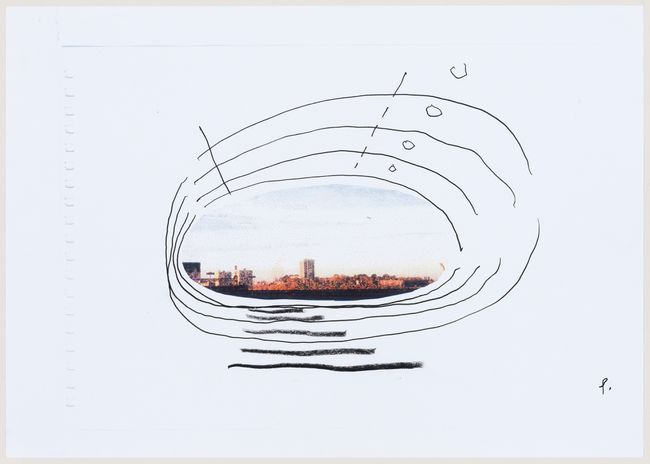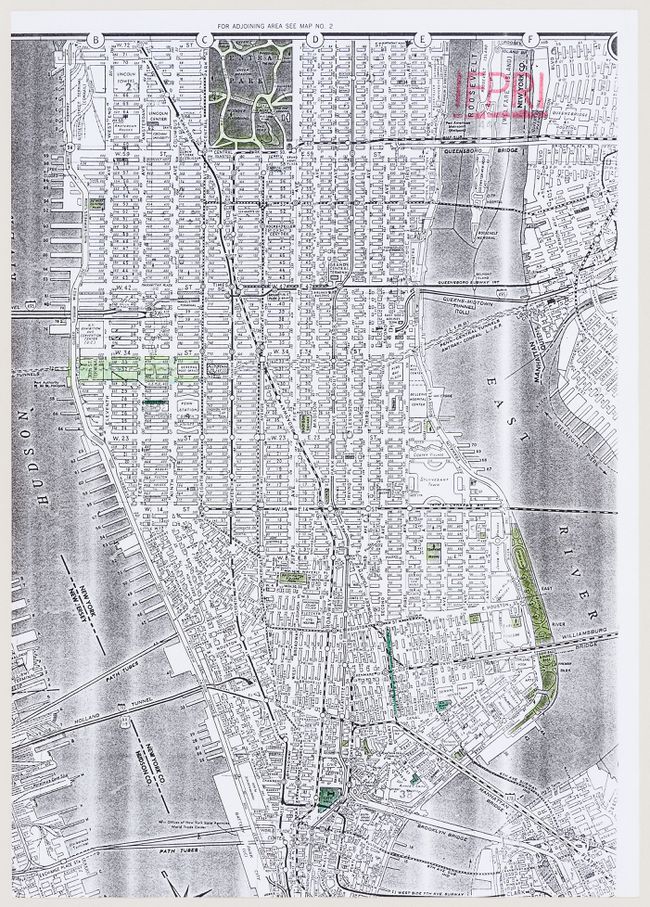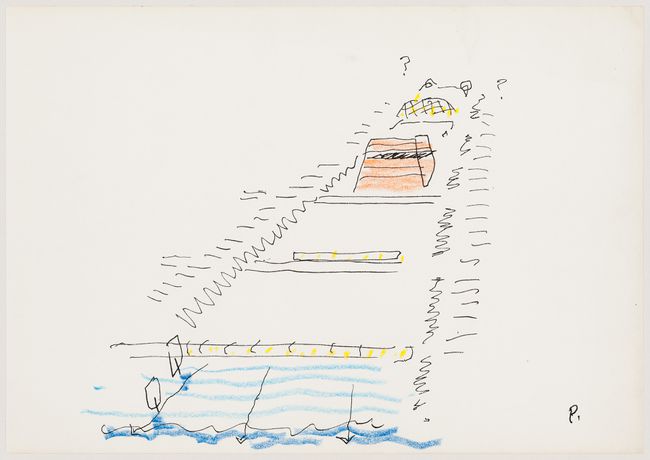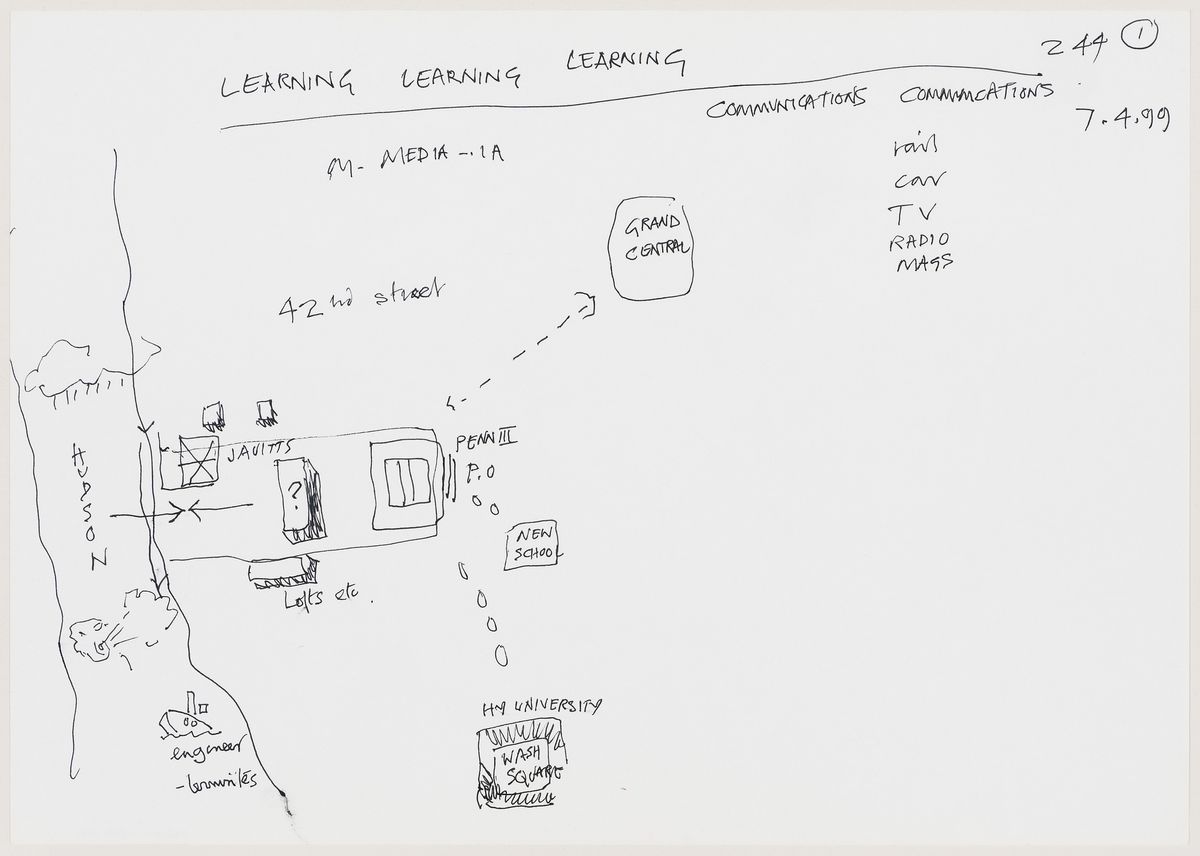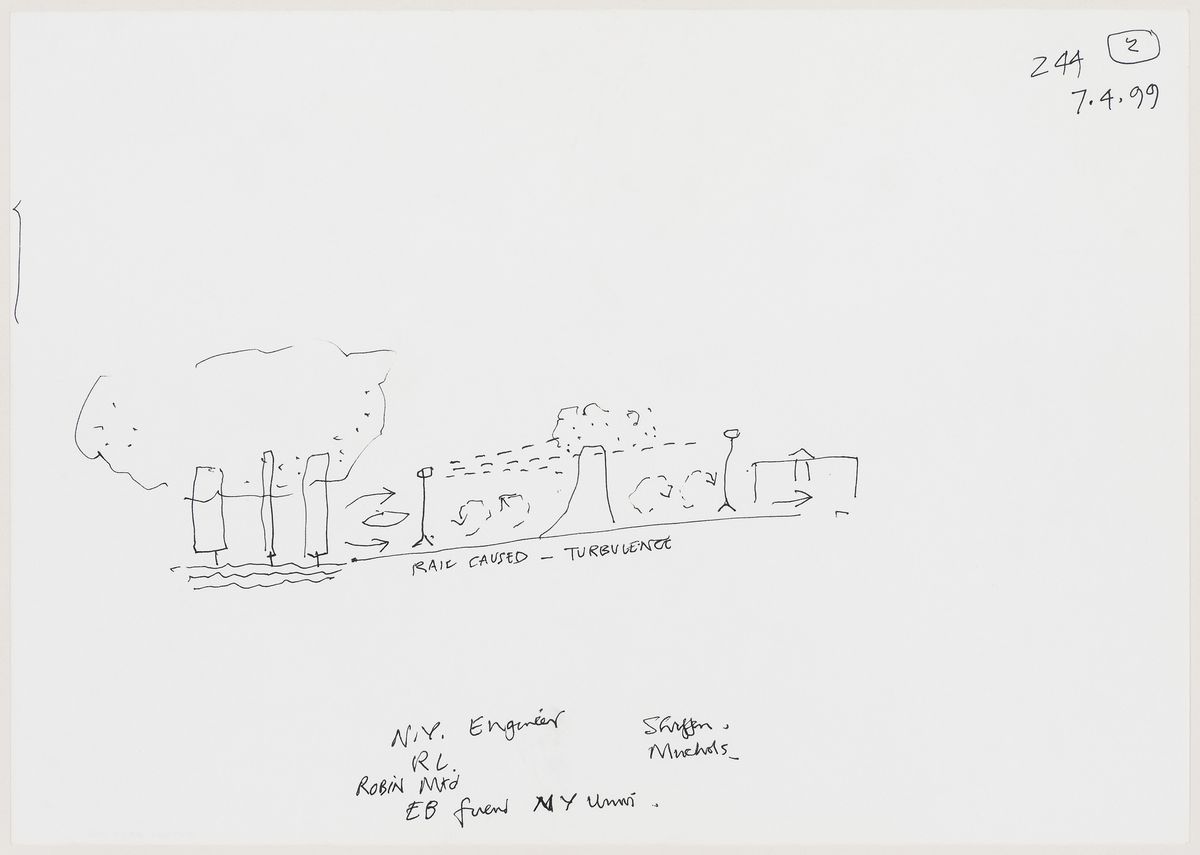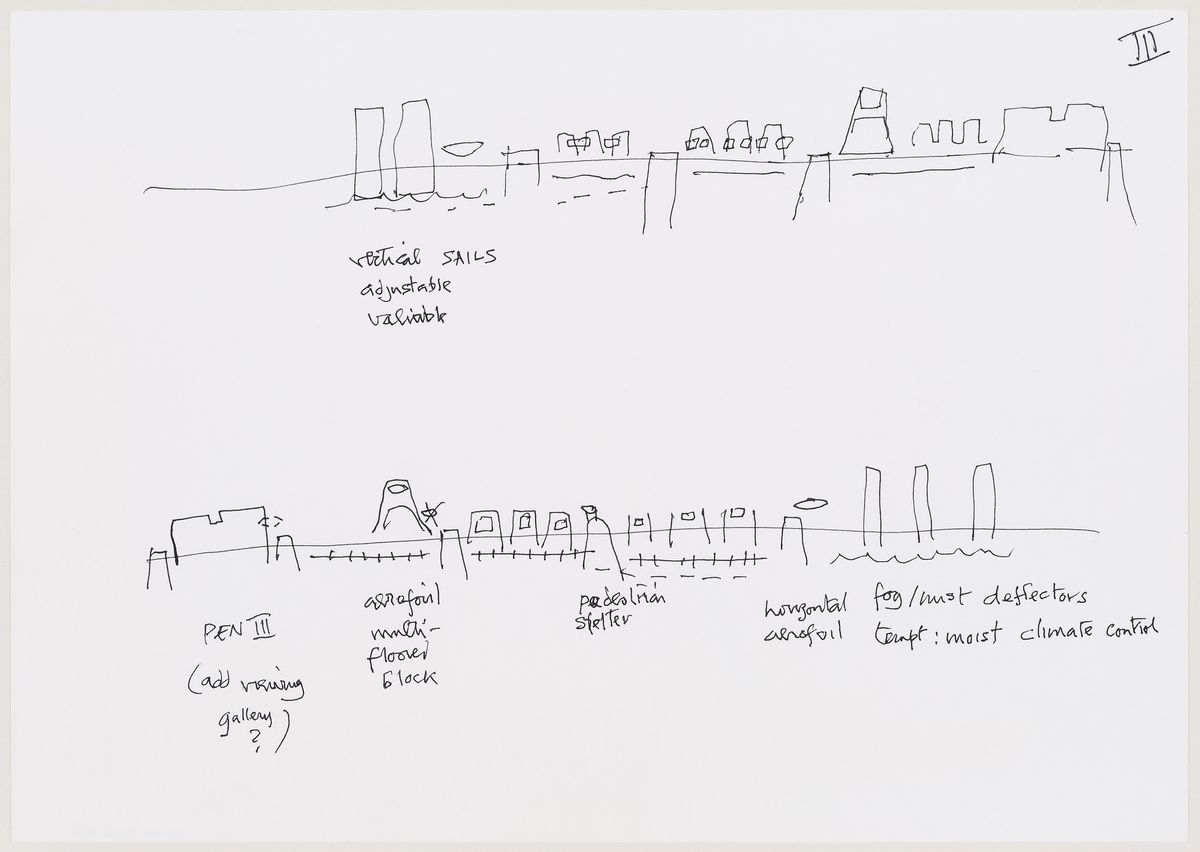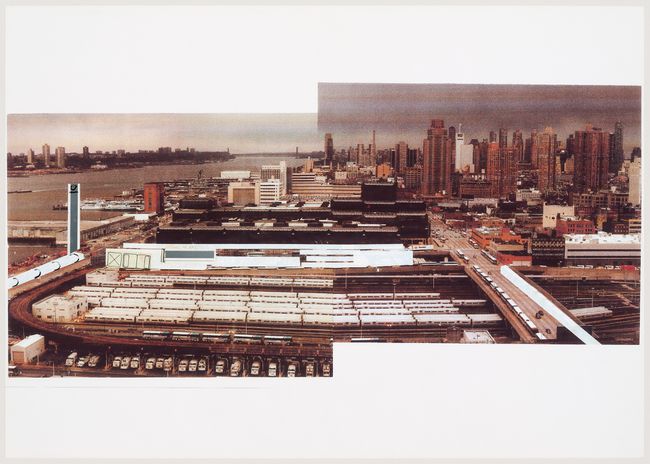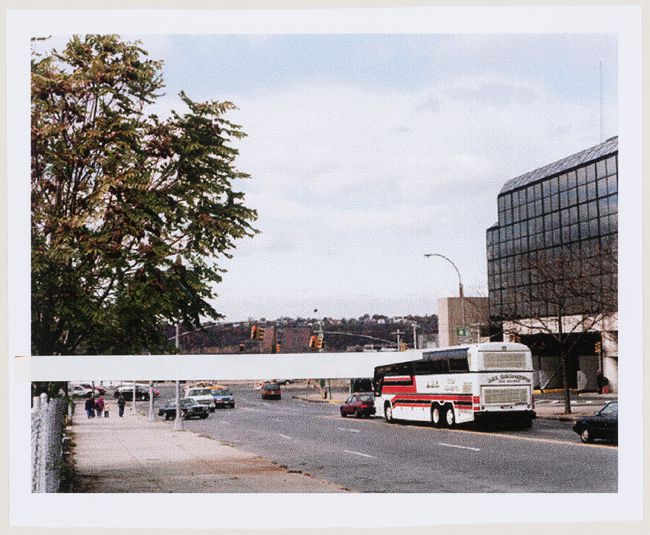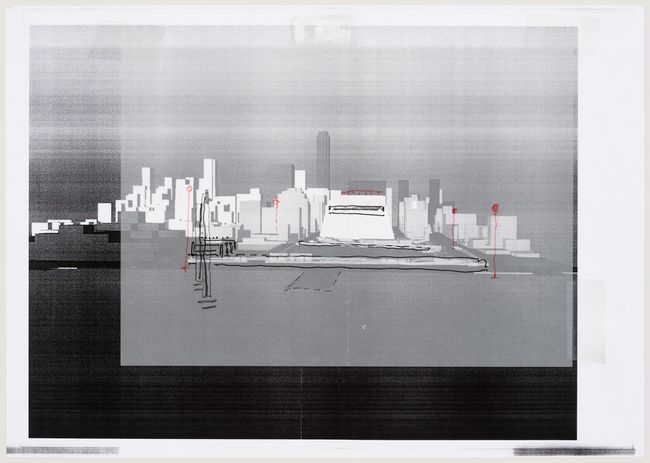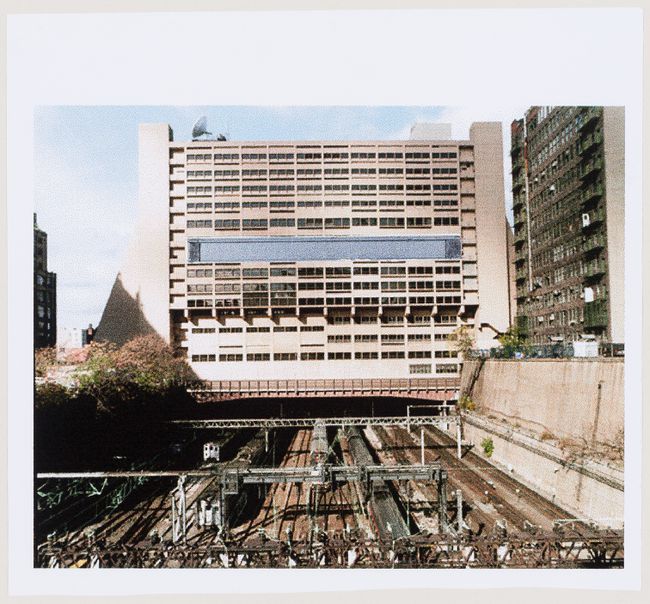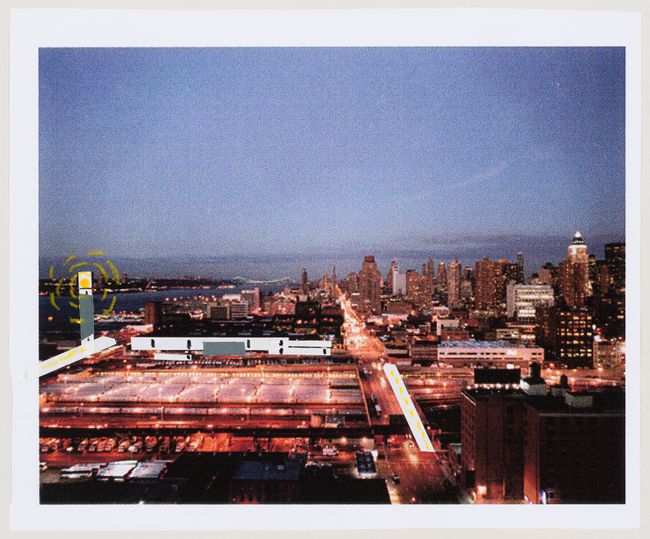A Lung for Midtown Manhattan
Cedric Price's entry to the IFCCA Prize Competition for the Design of Cities, 1999
The IFCCA Prize Competition, also known as the CCA Competition for the Design of Cities, called for ways to deal with disused railway infrastructure in Manhattan’s West Side. The competition jury awarded the prize to Peter Eisenman’s entry.
Cities have a future dependent on growth and change, together with the quality of their occupancy.
New York City has a particular nature, which is “Pride in the New.” The unique bears no comparison.
New York City is ideally suited to the opportunity of establishing a new quality of the 21st century which must be shared by all its citizens and enjoyed by its visitors. Such quality should be recognized to be beneficial to all. New York City is strong and generous enough to achieve this.
The quality is comprehensive and continuous improvement of its citizens’ health.
Mental, physical and sensory well-being is required.
Such a quality may well constitute the future definition of the 21st-century city.
The site chose for the first IFCCA competition is ideal for such a crucial working, living test. The timing is critical—the opportunity is unique and will occur once only. A strategy for cities will be established.
A lung for Midtown is provided.
The Hudson River is the primary intake.
The island of Manhattan is recognizable-
The “open-air” quality of the site must be realized.
The present fallow element of the site should be exploited.
Railway lines should remain uncovered and a geotechnical survey be undertaken to determine surface drainage patterns and future land movements.
Redundant high-level tracks should be demolished with immediacy.
Both weeds and planners’ “inedible greenery” should be excluded.
The hard nature of Manhattan’s man-made surfaces should be recognized and maintained.
Fortuitously, the nature of the current land owners is beneficial to the successful execution of this proposal.
This moment in time will not last.
Moving fresh air over the entire site of 100 acres which include:
The area of the Hudson river, approximately 16 acres
The unenclosed open spaces-railways, rail yards, associated railway properties.
Streets and avenues, sidewalks, parking lots, etc.
Structures, including buildings.
Six steel laser transmission towers. These laser beams encompass the entire site at a height of 85 feet from ground level, which will give a rough visual reminder to all, of the former zoning requirements for this area. The laser beams will be obviously affected by the atmospheric conditions-moisture content etc.
Visually, the penumbral interference of the lasers will provide varying definition of the giant, “virtual” volume.
The Hudson Sleeve
A continuous enclosed public promenade fronting the Hudson bank. The Sleeve extends across the entire site, providing a high-level view for the pedestrian at a height of approximately 20 feet above the river bank. The sleeve’s horizontal section acts as a continuous aerofoil, while providing partial shelter to the ground-based pedestrian. Access to and from the Sleeve will be at each end, appropriate to the overall design of the Hudson River Park.
Cedric Price. IFCCA Prize Competition, view of site from south with proposed Hudson Sleeve, laser transmission tower, southern extension to Javits Convention Center and City Sleeve, 1999. Ink, paper and graphic appliqué film over inkjet print on paper, 29.8 × 42.1 cm. IFCCA Prize Competition for the Design of Cities fonds. CCA Collection, DR2004:0360:002
The City Sleeve
This sleeve is initially sited along the east side of 10th Avenue. It enables two-way sheltered pedestrian movement between 31st and 33rd streets. The City Sleeve thresholds occur at the crossing lights. The double-helical spring structure allows the sleeve to adapt to a varied siting and to be re-positioned on an equivalent sidewalk.
The Wind Blinkers
The 40-foot-wide wind blinkers, or sails, are sited in the Hudson, standing 70 feet high. The stainless-steel structures are supported on stiff, vertical pivots, responding to the prevailing wind.
The Westyard Building
Two whole floors are to be removed—floors 9 and 10. This will form an opening in the block creating, at high level, a wind gap in the final tall wall to the rail cutting, and facing the Penn III bulk. This in turn will reinforce the effect of the proposed baffle to the new station. Internally, the multi-purpose Westyard Building should provide altered floor plans to reflect the need for studio/workshop/office amalgams. Access through this new gap will be confined to elevators and escape stairs only.
Javits Convention Center South Extension
This assembly and storage building is sited to the south of the existing building. The steel structure contains a system of hydraulically powered adjustable floors. Storage capacity is combined with mobile display facilities. Together with an extension to the north, this enlarged Javits Center recognizes the changing demands for conference and display.
Cedric Price. IFCCA Prize Competition. view of site with proposed structures (laser transmission tower, Hudson Sleeve, Javits Convention Center South Extension and City Sleeve), 1999. Yellow coloured pencil on paper, ink on paper, grey paper and yellow coloured pencil over colour electrostatic print on paper, 17.8 × 21.6 cm. IFCCA Prize Competition for the Design of Cities fonds. CCA Collection, DR2004:0358:005
“There are many situations in which to be systematically late is to be systematically wrong.” - Sir Geoffrey Vickers, VC, Value Systems and Social Progress (New York: Basic Books, 1968)
Project by Cedric Price Architects in association with CPA: J. Petto, David Price, Joan Randle
Advice, support, and encouragement: Bernard Gambrill, Royston Landau, Bob McComb, Robin Middleton, Mike Nichols, Martin Reynolds, Andre Schiffrin, Catharine Simpson, Robertson Ward Snr.
